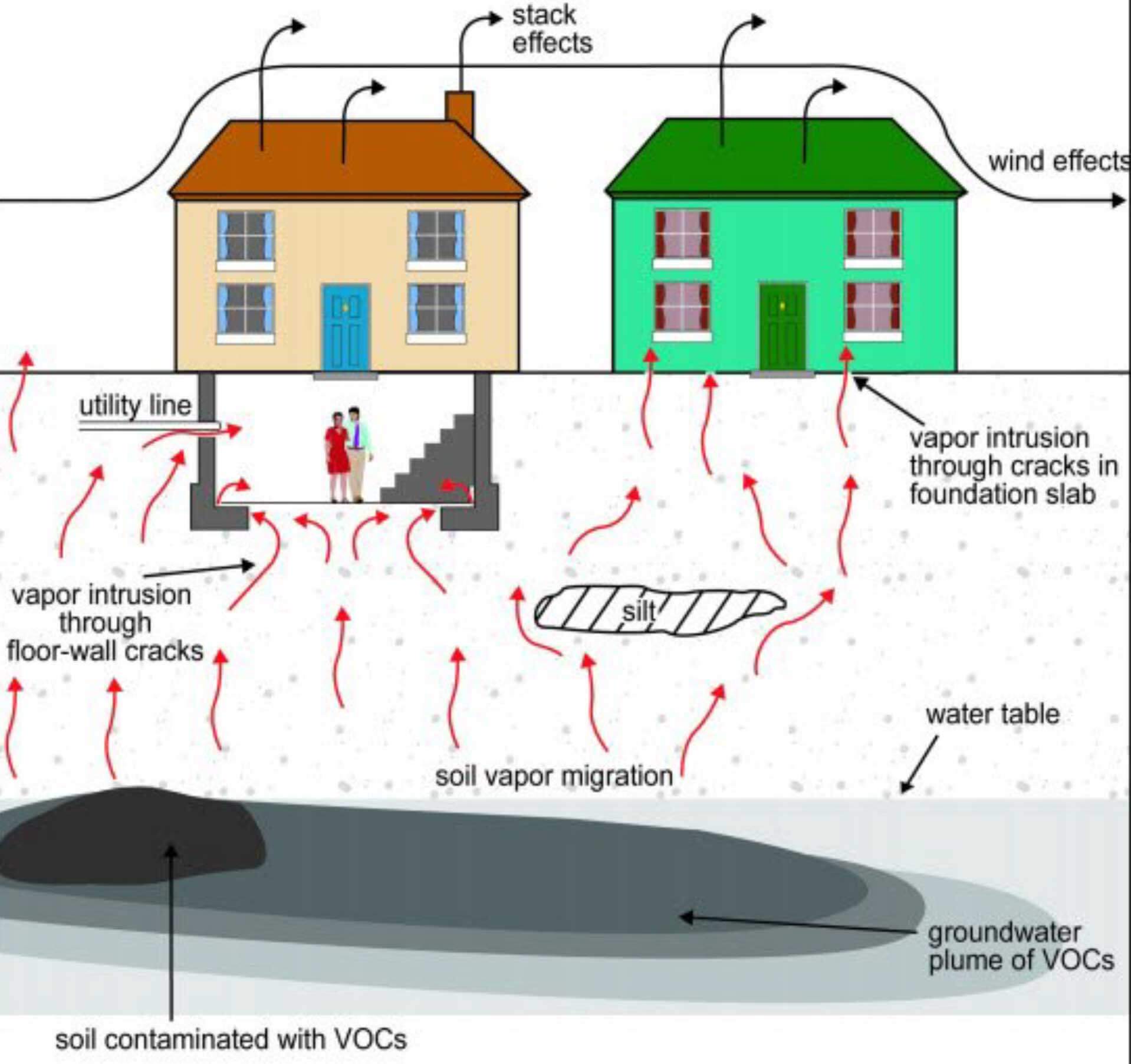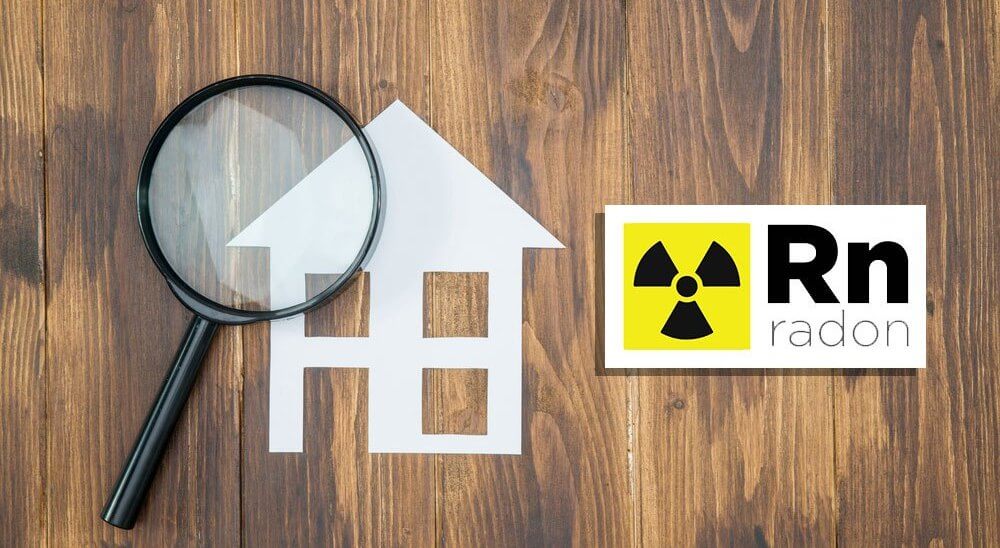What is Vapor Intrusion?
Figure 1: Migration of Soil Vapors to Indoor Air
This figure depicts the migration of vapors in soil gas from contaminated soil and groundwater into buildings. Vapors in soil gas are shown to enter buildings through cracks in the foundation and openings for utility lines. Atmospheric conditions and building ventilation are shown to influence soil gas intrusion.
Vapor intrusion occurs when there is a migration of vapor-forming chemicals from any subsurface source into an overlying building. Recognition of soil vapor intrusion to buildings and other enclosed spaces occurred in the 1980s with concerns over radon intrusion. Subsequently, there was an increasing awareness that anthropogenic chemicals (e.g., petroleum hydrocarbons and chlorinated solvents) in soil, groundwater, and sewers and drainlines could also pose threats to indoor air quality via the vapor intrusion pathway.
Vapor-forming chemicals may include:
- volatile organic compounds (VOCs), such as trichloroethylene and benzene.
- select semivolatile organic compounds, such as naphthalene.
- elemental mercury.
- some polychlorinated biphenyls and pesticides.

In extreme cases, the vapors may accumulate in dwellings or occupied buildings to levels that may pose:
- near-term safety hazards (e.g., explosion)
- acute health effects
In buildings with lower concentrations of vapor-forming chemicals arising from vapor intrusion, the main concern is whether the chemicals may pose an unacceptable risk of health effects due to long-term (i.e., chronic) exposure to these lower levels.
A complicating factor in evaluating the potential chronic risk from vapor intrusion is the potential presence of some of the same chemicals from emission sources in the building that may pose, separately or in combination with vapor intrusion, a significant human health risk.
- household solvents
- gasoline.
- cleaners
Vapor Intrusion Mitigation Techniques
When mitigating vapor intrusion, there are a number of viable techniques which differ in both their approach and long-term effectiveness, These approaches include:
- Source Remediation – removing the actual contaminated soil/groundwater will eventually eliminate vapor intrusion
- Vapor Intrusion Barriers – installing a physical, chemical resistant barrier material to seal off exposure pathways. The use of a vapor collection system can be used in conjunction to alleviate the buildup of contaminated vapors underneath the building.
- Ventilation Systems – installing a ventilation and exhaust system to remove the contaminated air from within or beneath the building. Forced or mechanical ventilation may be accomplished by using a fan to blow air into or out of the building.

